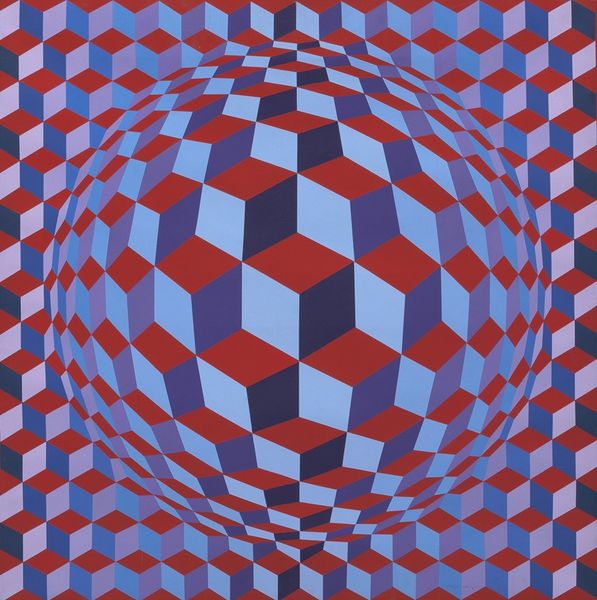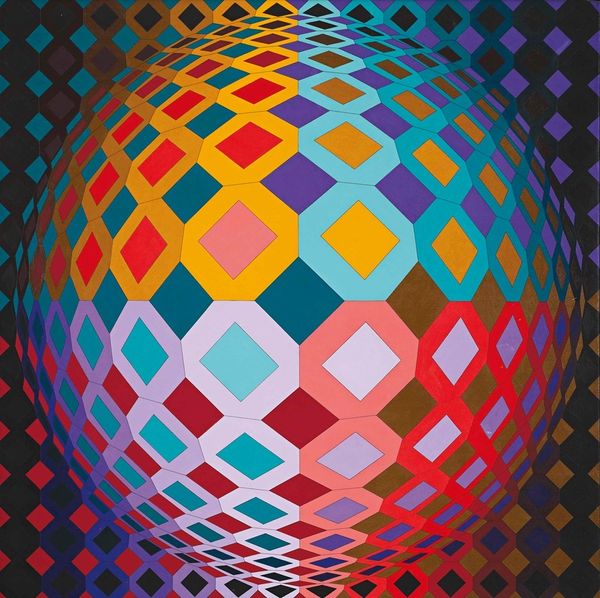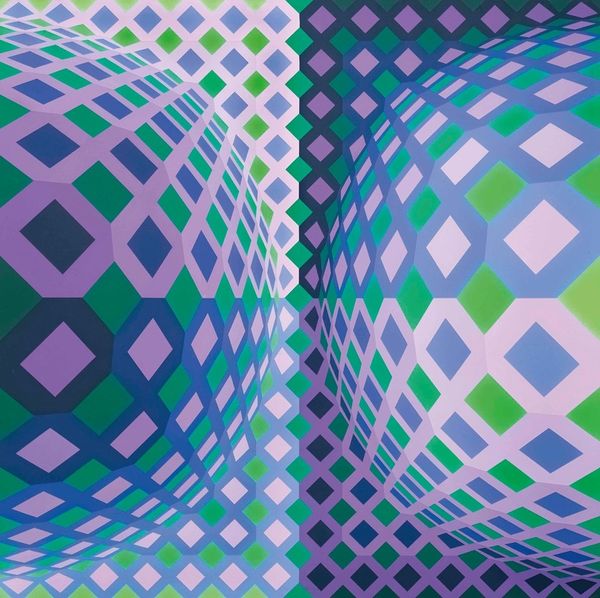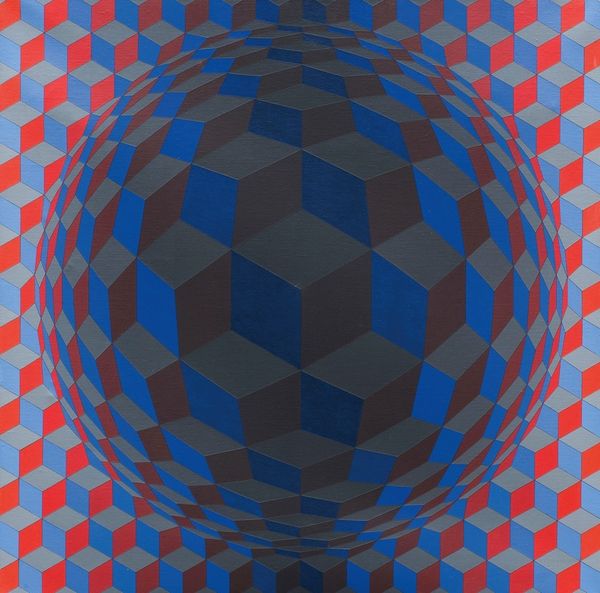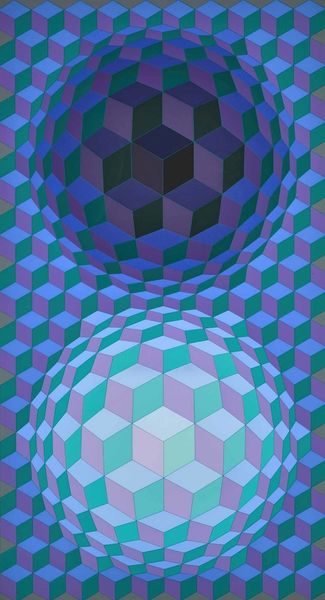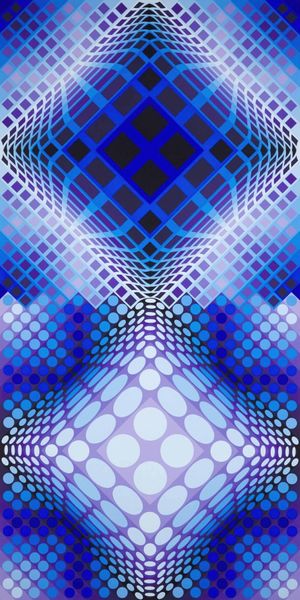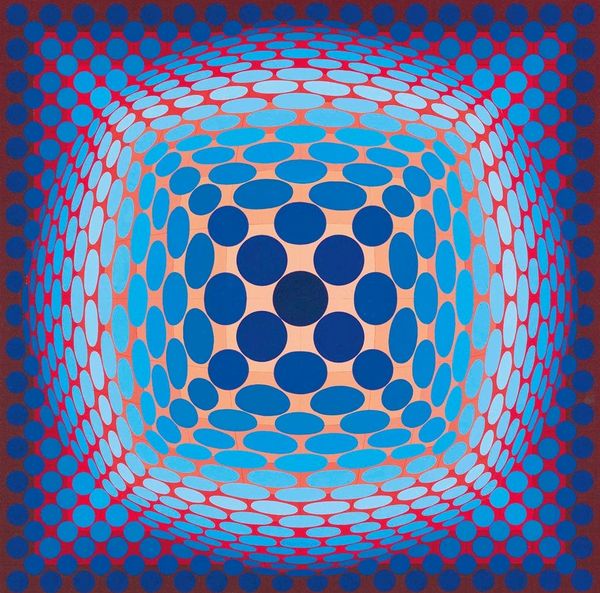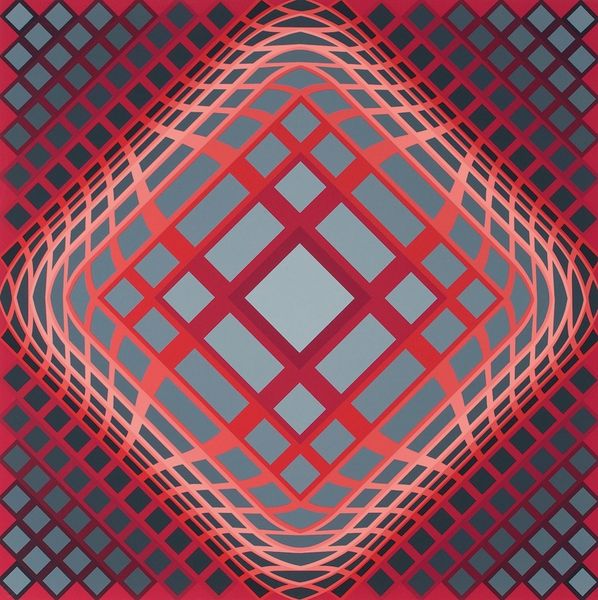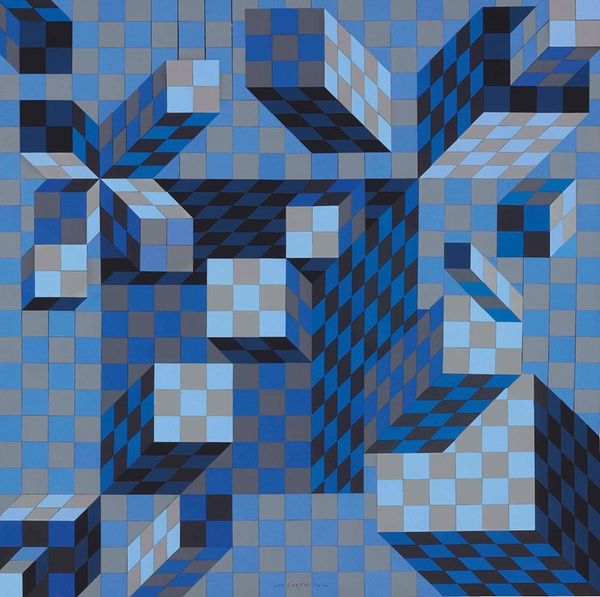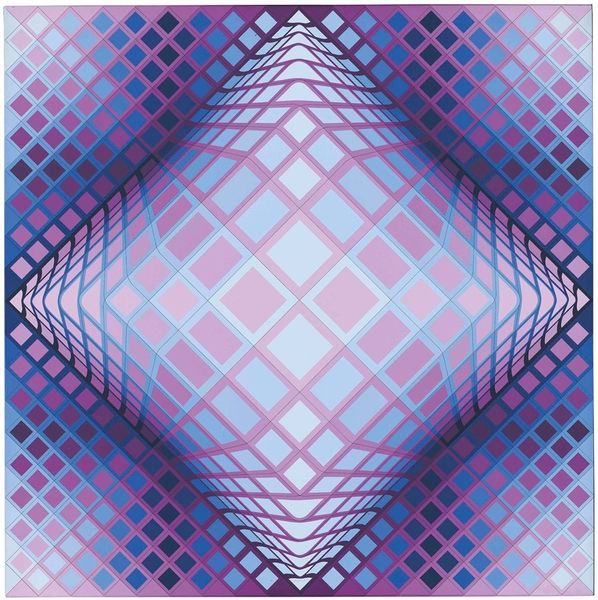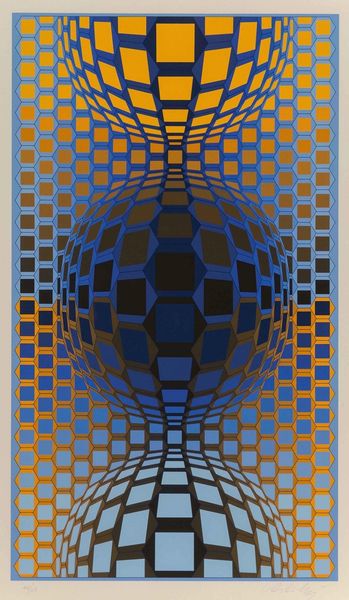
acrylic-paint
#
kinetic-art
#
op-art
#
acrylic-paint
#
abstract
#
geometric pattern
#
abstract pattern
#
repetitive shape and pattern
#
minimal pattern
#
geometric
#
repetition of pattern
#
vertical pattern
#
abstraction
#
pattern repetition
#
layered pattern
#
combined pattern
#
repetitive pattern
Copyright: Modern Artists: Artvee
Curator: Victor Vasarely's "Epoff," created in 1969, uses acrylic to achieve this mesmerizing effect. What's your initial take on it? Editor: Intriguing. It gives the illusion of a sphere emerging from a flat plane. The interplay of blues, pinks, and blacks creates depth. Is it meant to mimic movement, or perhaps volume? Curator: Its classification as Op Art means exactly that. These geometric forms weren't spontaneous but built with a repeatable set of processes—linking it directly to production in an almost industrial way. Do you agree it evokes an element of mechanical reproduction, of design meeting mass production? Editor: Absolutely. The repetition is key. Semiotically, each form carries minimal significance alone, but en masse, they suggest a shift, an almost digital distortion of space. The way Vasarely employs positive and negative space is also visually appealing, tricking the eye into seeing dimensionality where there isn’t any. Curator: Yes, and how might we understand the material conditions of the period shaping Vasarely's exploration? Mass consumerism was booming; plastics and synthetics were celebrated, making this aesthetic so potent for his time. It speaks to the burgeoning accessibility and disposability that redefined art making. Editor: True. However, isolating it from purely formal elements diminishes its impact. This intense optical play speaks directly to visual perception. By exploring shapes, and color arrangements, it creates an experience independent of context. I do think this element is the key. Curator: Fair enough. Ultimately, the tension between its planned process and perceptual impact sparks a dialogue around labor, reception, and material. Thank you for this exchange, Editor. Editor: Likewise. These layered perspectives make me appreciate anew Vasarely’s creation, acknowledging not just "what" it represents, but "how" its design operates.
Comments
No comments
Be the first to comment and join the conversation on the ultimate creative platform.
